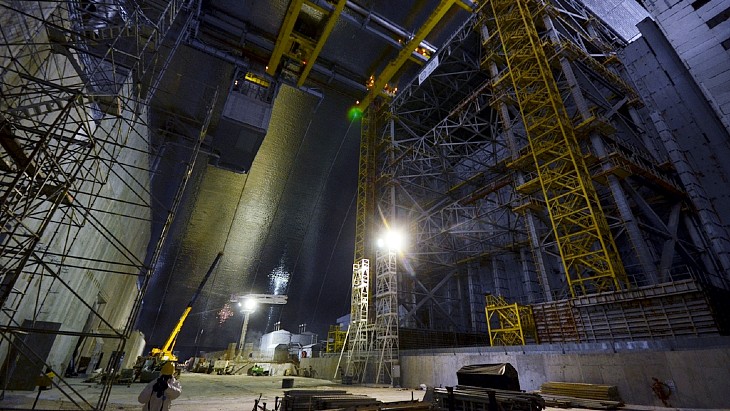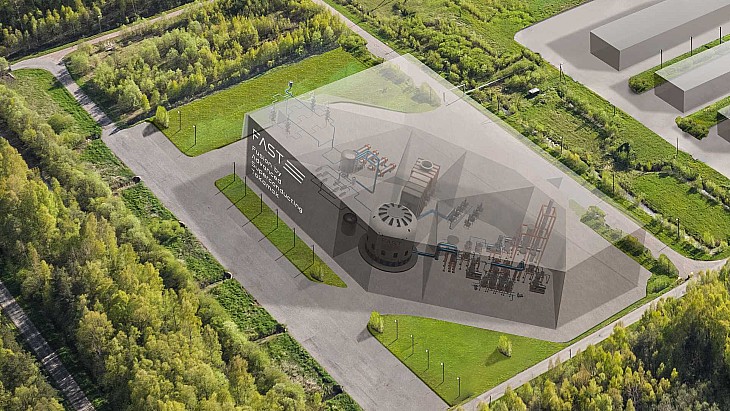The project, funded through the International Chernobyl Cooperation Account, aims to determine the scope of early deconstruction work for unstable Shelter structures and provide an initial cost estimate and enable the beginning of design work for the next stage, which includes the dismantling of the unstable Shelter structures.
The original shelter over the destroyed unit 4 at Chernobyl was constructed in a matter of just months, and the international Shelter Implementation Plan in the 1990s had three phases - firstly to stabilise it and secondly to build a larger secure construction to enclose it - the New Safe Confinement which was completed in 2017 to pave the way for the dismantling and decommissioning stage.
The Shelter Object - also known as the 'sarcophagus' - still contains the molten core of the reactor and an estimated 200 tonnes of highly radioactive material. The stability of the structure has developed into one of the major risk factors at the site. A project to shore up the structure was completed in mid-2008, but at that time the maximum life of the stabilised structures was determined as the end of 2023.
The licence for the storage of radioactive waste within the shelter was extended last year from 2023 to 2029, with a 2025 deadline for the development of a new design for the dismantling of "unstable structures with an unacceptably high probability of collapse", and a 31 October 2029 deadline for completion of the dismantling.
According to World Nuclear Association, the hermetically-sealed New Safe Confinement allows "engineers to remotely dismantle the 1986 structure that has shielded the remains of the reactor from the weather since the weeks after the accident. It will enable the eventual removal of the fuel-containing materials in the bottom of the reactor building and accommodate their characterisation, compaction, and packing for disposal. This task represents the most important step in eliminating nuclear hazard at the site - and the real start of dismantling".
The New Safe Confinement (NSC) is the largest moveable land-based structure built - with a span of 257 metres, a length of 162 metres, a height of 108 metres and a total weight of 36,000 tonnes equipped - and with a lifetime of 100 years, it has been designed to allow for the eventual dismantling of the ageing makeshift shelter from 1986 and the management of radioactive waste. It has also been designed to withstand temperatures ranging from -43°C to +45°C, a class-three tornado, and an earthquake with a magnitude of 6 on the Richter scale.
The International Chernobyl Cooperation Account was established in November 2020 by the European Bank for Reconstruction and Development at the Ukrainian government's request to support a comprehensive plan for Chernobyl.
UTEM-Engineering LLC has been selected as the consultant. The work also includes "revising the criteria and requirements for the NSC infrastructure to support the dismantling of unstable structures in the Shelter. This also involves developing all necessary technical specifications, including for lifting equipment, systems for processing contaminated dismantled structures, their further transportation, engineering and control systems for" the second stage of the project and "additional radiation monitoring equipment, radiation-protected personnel transfer boxes, and other related documentation".





_34792.jpg)
_16403_79272.jpg)



_76087_55556.jpg)



